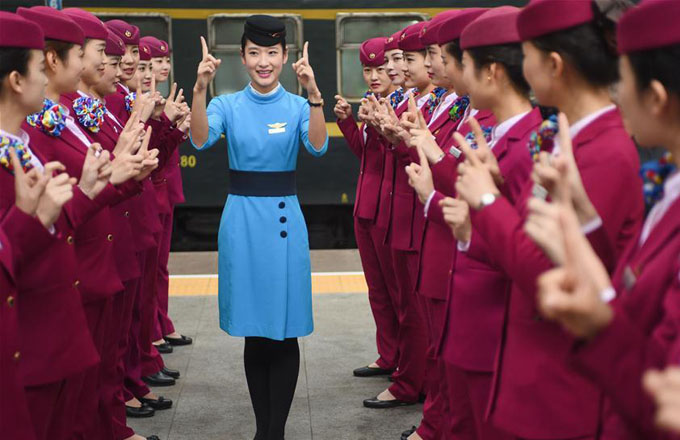Chinese universities look to adopt a sporting culture
 |
|
Basketball players from colleges in China and the United States during a friendly game at Shanghai Jiao Tong University on Nov 9. FANG ZHE/XINHUA |
Authorities discuss healthy mixture of academic activity and team games
Few in China think of basketball when Stanford and Harvard are mentioned, but it's what's overlooked here about the two universities that contributes greatly to their worldwide prestige.
The emphasis on athletic development of the two academic institutions, highlighted by a basketball game played between them during their recent China trip, has inspired educators, officials and celebrities to reflect on the underdeveloped role played by sports in China's higher education system.
The excitement of the game-won by Stanford, 80-70, in Shanghai on Nov 11 in the squads' NCAA season opener-has faded, but the impact is lasting.
"The collegiate athletic system in the US has been world-famous in not only developing elite athletes but also cultivating leaders in other fields. We are learning and borrowing their experiences to adjust our own program to enhance sport's role in education as a whole," said Yang Liguo, vice-president and secretary-general of the Federation of University Sports China, the Chinese counterpart of the NCAA.
Yang made the remarks at the China-US University Sports and Education Summit held before the game.
University leaders, education officials and sports executives, especially from Pac-12 and the Ivy League, two major collegiate sports conferences in the US, attended the summit to exchange ideas and best practices on collegiate sports development in panel discussions.
The FUSC also announced the extension of its partnership with Pac-12, a collegiate athletic conference of 12 universities including Stanford and UCLA in the western US, for two more years to send 200 Chinese college coaches to train on US campuses annually through 2018.
Yet what matters more than improving coaching in China's academic-dominant system is changing people's mindset, Yang said.
"In the US I found it's hard to call students back to the classroom from the sports field, while in China it's hard to persuade them to go out to exercise on the playground," he recalled during a recent trip to the US for a field study.
"To change the idea that playing sport is wasting time and to instill the concept that participating in sports teaches valuable life lessons, such as teamwork, leadership and time management among Chinese teachers, school leaders, parents and employers, is just as important."
Larry Scott, the commissioner of Pac-12, said proving that point was the reason behind bringing two of the best-known US universities to play a basketball game in China, rather than to attend an academic symposium.
"China has a lot of potential to possibly involve elite academic universities with a strong culture of sports. We are honored to play a role in the people-to-people exchange."
To upgrade China's collegiate sports development with the US model as an example, the Chinese program needs to set up a conference system where schools with proximity and similar interests compete, said Robin Harris, executive director of the Ivy League.
The Ivy League comprised eight private institutions, including Harvard and Yale, in the northeastern US that play 33 sports in division one of NCAA.
"I suggest that China looks for like-minded schools that will approach athletics similarly, so they can compete in similar rules and work well together," she said.
Citing the fact that Harvard athletes had to keep up with their school work during their China trip, Harris also stressed the importance of making a smart sports calendar in line with school semesters to allow student to manage their time.
"The game between Stanford and Harvard sent a strong message. The fact that you saw great athletes who are also students at both schools shows you can do both, because we allow students the time to practice, to compete and then they have time to sit for study and to have fun with their classmates."

























